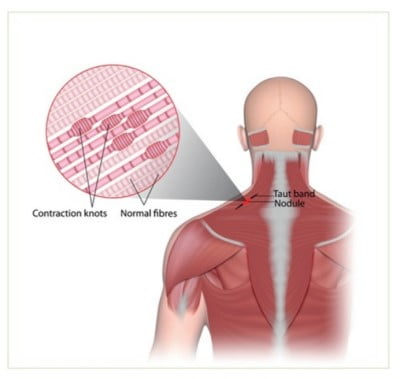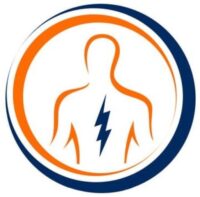These days, physiotherapists, doctors, chiropractors, and other medical professionals use the practice known as dry needling. Take a look at the dry needling procedure and its operation before we get into the benefits and drawbacks.
As physical therapists, we treat a lot of patients who have discomfort in their musculoskeletal system. On examining, the reason behind these pains could be the trigger points. These trigger points can cause pain in a specific spot within the muscle. Many studies have shown that myofascial trigger points are associated with many pain syndromes. With such a huge number of patients with pain from trigger points, the knowledge of dry needling becomes very crucial.
Trigger point dry needling is a new technique that has become very popular nowadays. Dry needling is an adaptation of traditional acupuncture. A huge number of physical therapists have started using it. It has become so popular as it is very effective in treating myofascial pain syndrome. Before we discuss further, first understand ‘what is a trigger point?’
READ MORE: Dry needling vs acupuncture
WHAT ARE MYOFASCIAL TRIGGER POINTS & HOW THEY ARE RELATED TO DRY NEEDLING?
A trigger point (TrP) is an area of hyperirritability that is sensitive to pressure. It can refer pain to other parts of the body as well. They can exist in every soft tissue of the body including muscles, ligament, periosteum, and skin. The myofascial trigger point is a TrP which is located in the skeletal muscle.
A trigger point is a tight and painful muscle knot located within a taut band of skeletal muscle tissue.
A common trigger point many therapists encounter is found in the Trapezius muscle. A trigger point in this area is a common cause of mechanical neck pain.

Dry needling involves the insertion of the needle into these trigger points. The manipulation of trigger points eases pain and reduces stiffness. Dry needling is helpful in many conditions. It can treat neck pain, back pain, headaches, impingement syndrome, etc.
For a better understanding of it, have a look at the pros and cons of dry needling.
Pros of Dry Needling
Dry needling has gained popularity in recent years. It is because of its benefits and very few side effects.
1. Precise treatment
Dry needling is a precise treatment as it targets specific points that are causing pain. These needles relax and reduce tension in the muscles and surrounding tissues.
It manipulates specific trigger points because of which, it is more precise than other treatments like stretching or manual therapy.
2. Effective
Dry needling treatment is effective against many conditions. It may be helpful in:
- low back pain,
- pain relief in cancer patients,
- muscle tightness,
- contusions,
- inflammation,
- deficit microcirculation,
- strains,
- sprains,
- swelling reduction, &
- pain modulation
3. Regain range of motion
The presence of trigger points obstructs the movements of joints. The pain caused by these trigger points doesn’t allow the person to move its joints in full ROM.
Dry needles resolve and manipulate these trigger points. This allows the patient to regain his/her normal range of motion and also eases pain.
4. Accelerate healing process
Dry needling accelerates the healing process. It has been seen that dry needling fastens a patient’s recovery time by increasing the blood flow and reducing spasms and inflammation. It also helps to reduce scar formation in damaged tissues.
5. Relieves pain
You will notice a reduction in pain within 24-48 hours. Some patients show an increase in mobility immediately after the treatment. You may need to take a few sessions of treatment for long-lasting positive effects.
6. Improves posture
Sometimes, the reason behind the bad posture is the hypertonicity of the muscles which doesn’t allow the muscles to get aligned properly.
Dry needling reduces tension and relaxes muscles that are resisting the alignment of the spine. This helps to get proper posture. Attaining good posture is very important & has many benefits. It also reduces the chances of getting problems associated with bad posture.
Cons of Dry Needling
The knowledge of the risks of dry needling is the most essential thing. The dry needling procedure is remarkably safe if performed responsibly. The person who is doing this process must have a thorough knowledge of the body’s anatomy, physiology, and pathology. The potential risks of dry needling:
1. Infections
The needles used in dry needling can cause infection if inserted through infected skin. The skin should be sterilized before inserting needles. Bacterial as well as viral infections can occur through these needles. Disposable needles can prevent the occurrence of these infections.
2. Bleeding
Minor bleeding is quite common in dry needling. If anything pierces the skin, then there will be bleeding for sure. But some patients who take anti-coagulants or anti-platelets are at higher risk of bleeding. The history of drugs that the patient takes should be checked by the therapist.
3. Needle fracture
The breakage of the needle while insertion or removal is quite rare but not impossible. High-quality disposable needles should be used to avoid this. If there is a needle fracture, then it should be removed with sterile forceps. Always inform the patient while inserting the needle as any kind of movement can lead to fracture of the needle.
4. Expensive
Dry needling is an expensive procedure. Some people find it too costly for pain removal as compared to pain killers. It is expensive since it require the purchase of equipment as well as trained professionals.
5. Allergic reactions
Patients who have any kind of allergies to metals should not get this treatment. This can cause rash, itching, or redness at the area of the treatment.
Your therapist should immediately drop the treatment if there is any allergic reaction. Continuation of the treatment can worsen the condition and may also cause death due to anaphylactic shock.
6. Forgotten needles
Sometimes the therapist can easily forget the needle into the body. The forgotten needle may cause injury to you. To avoid this issue, a single needle should be inserted at a time. Another needle should be put only after the removal of the first.
7. Injury
The process of dry needling can cause injury if not done carefully. The practitioner should be extra careful while treating sensitive areas.
Rarely the needles can also injure other parts of the body. It can cause nerve damage if a needle hits the nerve.
Final thoughts on pros & cons of dry needling
There is no doubt about the effectiveness and benefits of dry needling. But it also comes with some risks along with benefits.
One should look for the risks associated with it before going for treatment. Always go to a trained and licensed practitioner. All the risks associated with it can be avoided if done with safety.
